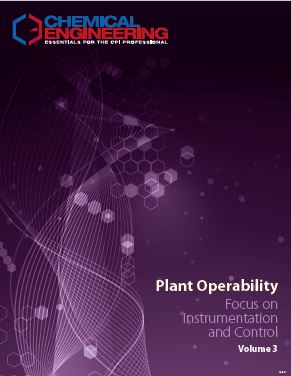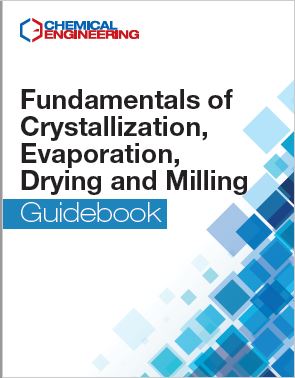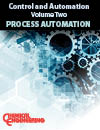Description
Efforts to maximize plant operability and reliability often depend heavily on state-of-the-art monitoring, instrumentation and control systems. Several overview articles discuss the use of instrumentation and control to ensure the operability of various plant assets. Others focus on the proper specification and operation of specific instrumentation types, for instance, the appropriate monitoring of flow, level and temperature.
Engineering recommendations are provided for improving the integrity and safety of wireless sensors, and for reducing the risk of cybersecurity issues at chemical process industries (CPI) facilities. Focus on using modeling to improve the reliability of batch operations, and the performance of distillation systems are included as well.
Delivered in a PDF format, 163 pages.
Articles Include:
Extremely Low-Temperature Systems
• Understanding the nuances of low-temperature engineering is key to safe and efficient operations
New Measurement Practices for Cold Climates
• Selecting the right pressure, temperature, flow and level meters and connection systems can help to eliminate the need for heated enclosures and sensing lines
What’s Corroding Your Control Room?
• Corrosion-induced failures are frequent in the electronics products used in control rooms, but proper environmental assessment, control and monitoring can help abate these concerns
Optimizing Analysis for Spray-Drying
• Precise control over spray-drying processes can be enabled by modern measurement approaches that provide information on particle size and shape in realtime
Maximizing Fan Efficiency
Point-Level Switches for Safety Systems
• Industries that manufacture or store potentially hazardous materials need to employ point-level switches to protect people and the environment from spills
Pressure Measurement: Handling Difficult Process Applications
• A better understanding of what pressure instruments do and how they work can help improve measurement performance, especially in troublesome applications
Distillation, Part 1: Experimental Validation of Column Simulations
• A practical look at the need for validation, as well as conceptual considerations and a case study
For Effective Plant Performance
• Corralling gigabytes of predictive maintenance data isn’t easy, but it’s essential for streamlining your process
Effective Plant Safety Management
• Three critical junctures and seven critical steps for plant safety are outlined
Remote Thermal Sensing
• By making it easy to detect heat anomalies, thermal cameras and infrared thermometers support preventive and predictive maintenance
Process Hazards Analysis Methods
Maintaining Heat Transfer-Fluid Quality
• Learning what can degrade heat-transfer-fluid quality can help minimize potentially negative effects
Dynamic Modeling for Steam System Control
• Dynamic modeling fills in the gaps of steady-state modeling and provides a more complete, reliable and efficient analysis
Advances in Process Temperature Measurement: Trends and Technologies
• Process temperature measurement is a constantly evolving field, and new technologies have allowed for more reliable measurements to be realized in many applications
Improving Data Analytics in Batch Manufacturing
• Producing a perfect batch is easy for some products but harder for others. Using analytics to dig into production data can help operators identify where variability might be creeping into a process
Performance Prediction for Industrial Boilers
• Understanding boiler performance calculations can allow engineers to improve the operation of their facility’s steam system and better engage with boiler-system vendors
Implementing an ‘Integrity Operating Window’ Program
• An effective Integrity Operating Window (IOW) program — which establishes safe operating limits and acceptable limits of process variation before an asset begins to degrade — can help operators stay ahead of potential repairs and reduce risk
Condition-Based Maintenance Management Enhances Reliability
• Understand reliability, condition monitoring and maintenance management to keep rotating equipment in top form
Communication Technologies for Throttling Valve Control
• Closed-loop control performance depends on the dynamic response of the controller, valve, measurement and process. Can wireless compete with conventional networks?
Pressure Transmitter Basics: Selection Guidelines
• Climbing the decision tree to pick the right pressure sensor
Cybersecurity: You Cannot Secure What You Cannot See
• Follow this guidance to understand today’s cybersecurity risk landscape and take the necessary steps to create a sound industrial control system cybersecurity program, including the development of a comprehensive, in-depth cyber-asset inventory
Coupler Technologies for Secure Chemical Handling
• Significant improvement in reducing fluid loss, optimizing flow paths and easing operation are among the advances in next-generation coupler technologies
Cybersecurity: Building Resilience from the Inside Out
• Cybersecurity is no longer a far-fetched concept relegated to science fiction or conspiracy theories. It is a major and growing global risk across all industry sectors
Improving the Operability of Process Plants
• Turndown and rangeability have a big impact on the flexibility and efficiency of chemical process operations
Advantages Gained in Automating Industrial Wastewater Treatment Plants
• Process monitoring and automation can improve efficiencies in wastewater treatment systems. A number of parameters well worth monitoring, as well as tips for implementation are described
Gas Detection as a Risk Mitigation Technique
• There are many differences between gas detection systems used for process monitoring and those used for protecting the safety of personnel
Protecting Sensor Data Transmitted Wirelessly: A Grounds-Up Approach
• Do not assume security is extensive enough to protect your critical data and processes. Take a layered security approach using different tactics to establish best practices for protecting network data
Applying CPI Temperature Sensors
• Don’t fall back on outdated rules of thumb that may no longer be valid, or ‘plug and play’ solutions that may not be applicable




